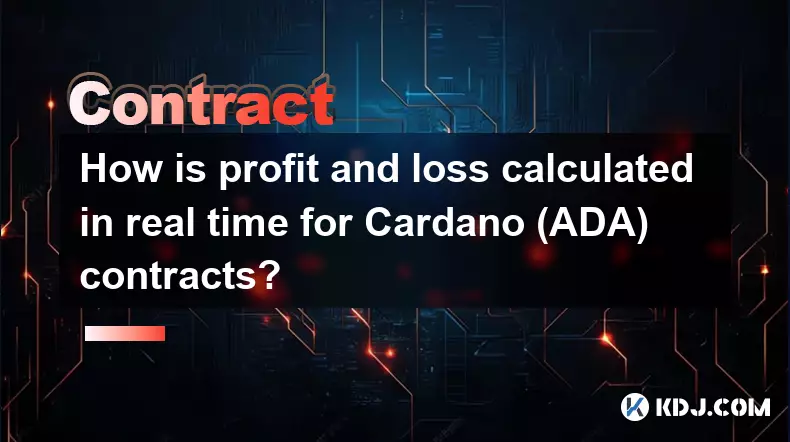-
 bitcoin
bitcoin $109667.069529 USD
-3.03% -
 ethereum
ethereum $3936.685804 USD
-4.07% -
 tether
tether $1.000493 USD
0.01% -
 xrp
xrp $2.771823 USD
-4.74% -
 bnb
bnb $957.805027 USD
-5.34% -
 solana
solana $196.735100 USD
-6.68% -
 usd-coin
usd-coin $0.999727 USD
-0.01% -
 dogecoin
dogecoin $0.227355 USD
-5.12% -
 tron
tron $0.335205 USD
-0.81% -
 cardano
cardano $0.779256 USD
-3.59% -
 ethena-usde
ethena-usde $0.999900 USD
-0.06% -
 hyperliquid
hyperliquid $42.492095 USD
-6.61% -
 chainlink
chainlink $20.501853 USD
-4.34% -
 avalanche
avalanche $28.952606 USD
-11.21% -
 stellar
stellar $0.356038 USD
-3.93%
How do I check the contract specifications for Coinbase contracts?
Coinbase contract specs detail key trading parameters like expiration, settlement method, tick size, and contract multiplier, which are essential for accurate margin and P&L calculations.
Sep 21, 2025 at 09:36 am

Understanding Coinbase Contract Specifications
1. Accessing the contract specifications for financial instruments on Coinbase requires navigating through official resources provided by the platform. Users must visit the Coinbase Futures or Coinbase Derivatives section depending on the type of contract they are analyzing. These platforms list detailed information about available futures and options contracts tied to cryptocurrencies like Bitcoin and Ethereum.
2. Each contract includes key data such as expiration date, settlement method, tick size, trading hours, and contract multiplier. This information is crucial for traders who need clarity on how a specific instrument behaves during trading and at expiry. The contract multiplier determines the actual value represented by one contract unit, which directly impacts margin requirements and profit/loss calculations.
3. Official documentation, often found under the “Specifications” tab on a given product page, outlines whether a contract is cash-settled or physically delivered. For instance, most Bitcoin futures on Coinbase are cash-settled in USD, meaning no actual BTC changes hands upon settlement.
Locating Contract Details on the Platform
1. Log into your Coinbase account and navigate to the derivatives trading interface. If you're using Coinbase Advanced Trade or a partnered futures platform, look for a market or products section where futures contracts are listed.
2. Select the cryptocurrency derivative you’re interested in—such as BTC-USD quarterly futures. Once selected, a dropdown or info icon typically reveals a link labeled “Contract Specs” or “Product Details.” Clicking this opens a full breakdown of the terms.
3. Review each field carefully. Common entries include minimum price fluctuation (tick value), maximum order size, initial and maintenance margin levels, and the underlying index used for price determination. The reference index, such as the CBX Bitcoin Index, ensures pricing transparency and reduces manipulation risk.
4. Some contracts also specify halts, auction procedures, and position limits. These influence how trades execute during volatile market conditions and are essential for high-frequency or institutional traders.
Using External Tools and APIs
1. Developers and algorithmic traders can retrieve contract specifications programmatically via Coinbase’s public API endpoints. The /futures/{symbol}/spec endpoint, if available, returns structured JSON data containing all contractual terms.
2. Third-party analytics platforms like TradingView, CoinGecko, or CryptoCompare may aggregate and display contract details from multiple exchanges, including Coinbase. While convenient, these sources should be cross-verified with primary documentation due to potential delays or inaccuracies.
3. Regulatory filings with bodies such as the CFTC (Commodity Futures Trading Commission) often contain exhaustive descriptions of contract design. These are publicly accessible and provide legal context behind each specification.
4. Community forums and developer repositories on GitHub sometimes host parsers or visualizers that interpret raw API responses into readable formats, helping users understand complex structures like inverse versus linear contracts.
Frequently Asked Questions
What is the difference between a deliverable and cash-settled crypto futures contract?A deliverable futures contract requires the physical transfer of the underlying cryptocurrency upon expiration, while a cash-settled contract settles the price difference in fiat currency, usually USD. Most Coinbase-listed futures are cash-settled, simplifying execution for retail participants.
How does the tick size affect my trading strategy?Tick size represents the smallest price increment a contract can move. A smaller tick size allows for tighter spreads and more precise pricing but may increase system load for automated traders. On Coinbase, BTC futures typically have a $0.50 tick size, influencing both entry precision and fee calculations.
Where can I find margin requirements for Coinbase futures?Margin requirements are published within the contract specifications page and updated dynamically based on volatility. Initial margin is the amount needed to open a position; maintenance margin is the threshold below which a trader must deposit additional funds. These values are set by Coinbase and subject to change without notice.
Are Coinbase contract specs standardized across all assets?No, each asset class—Bitcoin, Ethereum, etc.—has unique specifications tailored to its market behavior. For example, ETH futures might have different multipliers, trading hours, or settlement mechanisms compared to BTC futures. Always verify the specs for the exact symbol being traded.
Disclaimer:info@kdj.com
The information provided is not trading advice. kdj.com does not assume any responsibility for any investments made based on the information provided in this article. Cryptocurrencies are highly volatile and it is highly recommended that you invest with caution after thorough research!
If you believe that the content used on this website infringes your copyright, please contact us immediately (info@kdj.com) and we will delete it promptly.
- BlockDAG's Miner Rollout: A Global Expansion Story
- 2025-09-26 14:45:12
- XPL Surge: Is It a Dead Cat Bounce or the Real Deal?
- 2025-09-26 14:45:12
- XRP, Axelar, and Interchain Transfers: A New Era for DeFi?
- 2025-09-26 14:25:13
- Epstein Files, Antonio Brown, and Trump: A Wild Intersection
- 2025-09-26 14:25:13
- Tech-Savvy Parents Face Unexpected Challenges: A Guide to Childproofing the Digital Age
- 2025-09-26 14:30:01
- Riding the XRP Wave: Debt Tokenization and the Next Bull Cycle
- 2025-09-26 14:30:01
Related knowledge

How do I enable the "scalping-only" mode for Cardano (ADA) contracts?
Sep 24,2025 at 03:19am
Understanding Scalping Strategies in Crypto Derivatives1. Scalping in cryptocurrency trading refers to executing multiple short-term trades within min...

What is the maximum position limit for Cardano (ADA) contracts?
Sep 23,2025 at 11:00pm
Understanding ADA Futures and Derivatives Market Structure1. Cardano (ADA) futures contracts are offered by several major cryptocurrency derivatives e...

What is the maker fee for Cardano (ADA) contracts?
Sep 26,2025 at 09:01am
Understanding Maker Fees in Cardano (ADA) Contracts1. The concept of maker fees applies broadly across decentralized exchanges and smart contract plat...

How can I view open interest in Cardano (ADA) contracts?
Sep 24,2025 at 07:36am
Understanding Open Interest in Cardano Derivatives1. Open interest refers to the total number of outstanding derivative contracts, such as futures or ...

What is the function of the insurance fund in Cardano (ADA) contracts?
Sep 24,2025 at 02:18am
Understanding the Role of Insurance Funds in Cardano Smart Contracts1. The insurance fund within Cardano's ecosystem is not a native feature directly ...

How is profit and loss calculated in real time for Cardano (ADA) contracts?
Sep 26,2025 at 04:18pm
Understanding Real-Time Profit and Loss in Cardano (ADA) Contracts1. Real-time profit and loss (P&L) calculations for Cardano-based smart contracts re...

How do I enable the "scalping-only" mode for Cardano (ADA) contracts?
Sep 24,2025 at 03:19am
Understanding Scalping Strategies in Crypto Derivatives1. Scalping in cryptocurrency trading refers to executing multiple short-term trades within min...

What is the maximum position limit for Cardano (ADA) contracts?
Sep 23,2025 at 11:00pm
Understanding ADA Futures and Derivatives Market Structure1. Cardano (ADA) futures contracts are offered by several major cryptocurrency derivatives e...

What is the maker fee for Cardano (ADA) contracts?
Sep 26,2025 at 09:01am
Understanding Maker Fees in Cardano (ADA) Contracts1. The concept of maker fees applies broadly across decentralized exchanges and smart contract plat...

How can I view open interest in Cardano (ADA) contracts?
Sep 24,2025 at 07:36am
Understanding Open Interest in Cardano Derivatives1. Open interest refers to the total number of outstanding derivative contracts, such as futures or ...

What is the function of the insurance fund in Cardano (ADA) contracts?
Sep 24,2025 at 02:18am
Understanding the Role of Insurance Funds in Cardano Smart Contracts1. The insurance fund within Cardano's ecosystem is not a native feature directly ...

How is profit and loss calculated in real time for Cardano (ADA) contracts?
Sep 26,2025 at 04:18pm
Understanding Real-Time Profit and Loss in Cardano (ADA) Contracts1. Real-time profit and loss (P&L) calculations for Cardano-based smart contracts re...
See all articles










































































